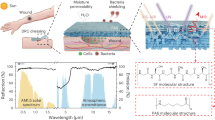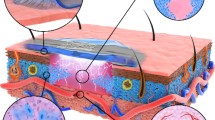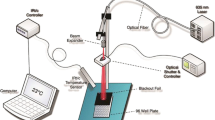Abstract
Far infrared radiation has an important effect on the growth of organisms. In order to explore the effect on promoting wound healing by far infrared fabrics, four kinds of fabrics with different far infrared emissivity were selected. According to the emissivity of the far infrared fabrics in the wearing state, the fabrics were coated outside the cell culture dish. Keratinocyte HaCaT and vein endothelial cell Huvec were selected as wound healing related epithelial cells. The proliferation and migration of the two kinds of cells were tested by four kinds of fabrics. The results of cell experiment showed that far infrared radiation can significantly promote the proliferation and migration of HaCaT and Huvec epithelial cells related to wound healing. The results showed that the longer the time of far infrared radiation, the more significant the promotion of HaCaT and Huvec cell proliferation and migration. The far infrared emissivity of four kinds of fabrics and their differences in promoting epidermal blood perfusion were involved in the analysis together with their effects on cell growth. The results showed that tea carbon fabric had the highest far infrared emissivity, the highest promotion of epidermal blood flow, and the most significant promotion of cell proliferation. In a certain range, the higher the far infrared emissivity and the longer the wearing time, the stronger the promotion of the proliferation and migration of HaCaT and Huvec epithelial cells. Therefore, from the cellular level, it is considered that far infrared fabrics can promote wound healing.
Similar content being viewed by others
References
T. K. Leung, Chin. J. Physiol., 58, 147 (2015).
F. Vatansever and M. R. Hamblin, Photonics Lasers Med., 1, 255 (2012).
S. Y. Yu, J. H. Chiu, S. D. Yang, Y. C. Hsu, W. Y. Lui, and C. W. Wu, Photodermatol. Photoimmunol. Photomed., 22, 78 (2006).
C. C. Lin, W. C. Yang, M. C. Chen, W. S. Liu, and P. C. Lee, Am. J. Kidney Dis., 62, 304 (2013).
U. Hadimeri, A. Wärme, and B. Stegmayr, Clin. Hemorheol. Microcirc., 66, 211 (2017).
A. Masuda, Y. Koga, M. Hattanmaru, S. Minagoe, and C. Tei, Psychother. Psychosom., 74, 288 (2005).
S. M. Ou, F. H. Hu, W. C. Yang, and C. C. Lin, Am. J. Gastroenterol., 109, 1957 (2014).
Y. H. Lin and T. S. Li, J. Evid. Based Complementary Altern. Med., 22, 186 (2017).
H. W. Chiu, C. H. Chen, J. N. Chang, C. H. Chen, and Y. H. Hsu, J. Mol. Med., 94, 809 (2016).
H. Toyokawa, Y. Matsui, J. Uhara, H. Tsuchiya, S. Teshima, H. Nakanishi, A. H. Kwon, Y. Azuma, T. Nagaoka, and Y. Kamiyama, Exp. Biol. Med., 228, 724 (2003).
A. R. Sheppard, M. L. Swicord, and Q. Balzano, Health Physics, 95, 365 (2008).
Y. Hamada, F. Teraoka, T. Matsumoto, A. Madachi, F. Toki, E. Uda, R. Hase, J. Takahashi, and N. Matsuura, Int. Congr. Ser., 1255, 339 (2003).
J. H. Lin, Y. T. Huang, T. T. Li, C. M. Lin, and C. W. Lou, J. Ind. Text., 46, 624 (2016).
N. Chen, Text. Ind. Technol., 48, 4 (2019).
M. S. Butt and M. T. Sultan, Critical Reviews in Food Science and Nutrition, 51, 363 (2011).
X. Hu, M. Tian, L. Qu, S. Zhu, and G. Han, Carbon, 95, 625 (2015).
W. L. Lan and C. F. J. Kuo, Text. Res. J., 89, 2247 (2018).
J. Ren, P. Li, H. Zhao, D. Chen, J. Zhen, Y. Wang, Y. Wang, and Y. Gu, Lasers Med. Sci., 29, 781 (2014).
Y. Y. Wang, Master’s Thesis, Zhejiang Sci-tech University, 2020.
F. Xu, Y. Guo, and X. Liu, J. Microcirculation, 24, 71 (2014).
J. R. S. Hales, C. Jessen, A. A. Fawcett, and R. B. King, Pflügers Archiv-Eur. J. Physiol., 404, 203 (1985).
Author information
Authors and Affiliations
Corresponding author
Rights and permissions
About this article
Cite this article
Mu, Y., Jin, Z., Yan, Y. et al. The Possibility of Using Far Infrared Fabrics to Promote Wound Healing from the Cellular Level. Fibers Polym 22, 2206–2214 (2021). https://doi.org/10.1007/s12221-021-0182-z
Received:
Revised:
Accepted:
Published:
Issue Date:
DOI: https://doi.org/10.1007/s12221-021-0182-z




